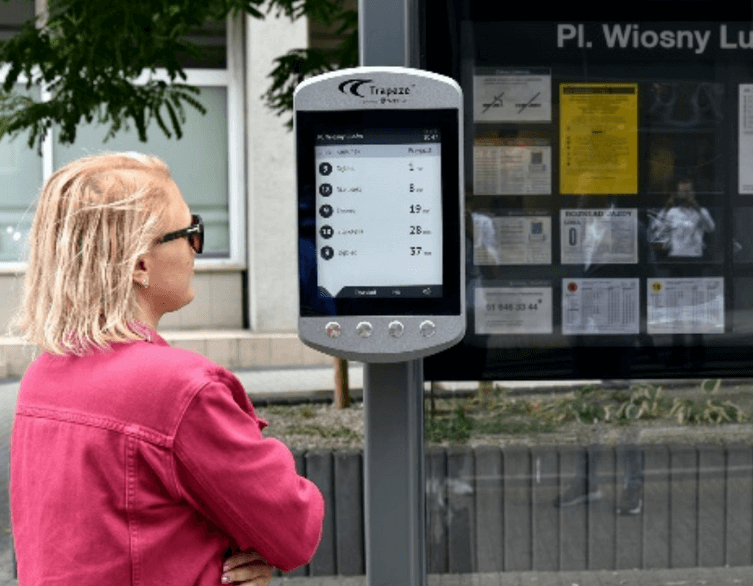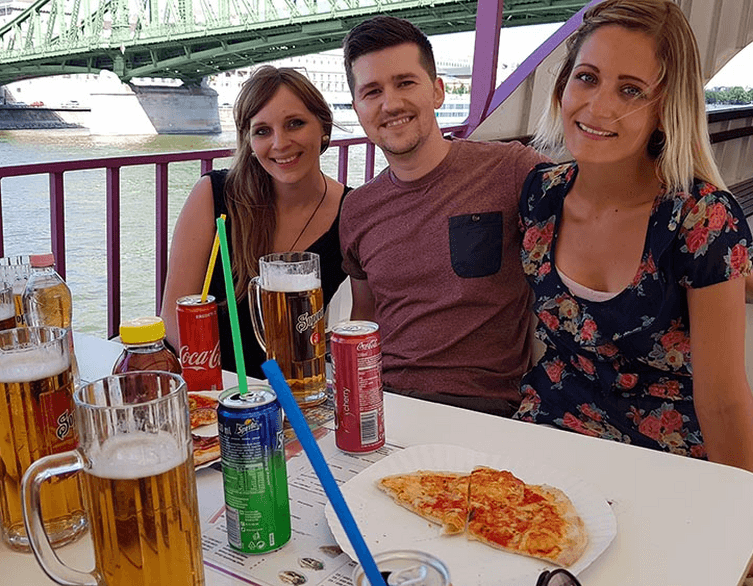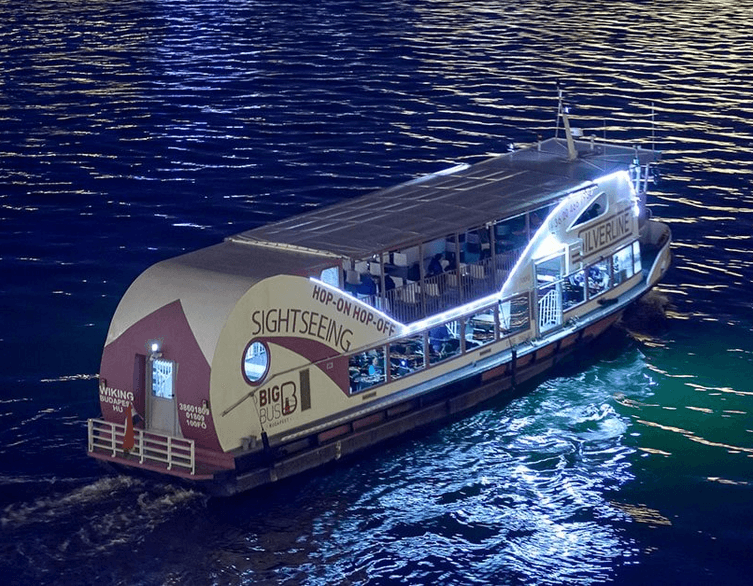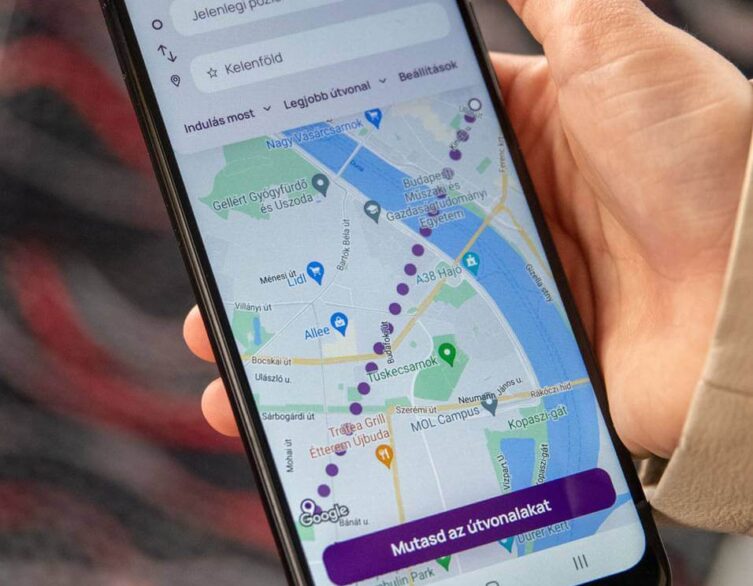Budapest’s Public Transport Gets a Smart Upgrade: E-Paper Displays Coming to Bus and Tram Stops

Budapest’s public transportation system has long been the pride of Hungary, moving more passengers daily than any other city in the country. The BKK (Budapest Transport Centre) operates services that set the standard for other Hungarian cities, and its digital passenger information through the FUTÁR system and BudapestGO app has earned European-level recognition. With over one million downloads, BudapestGO remains Hungary’s most popular transportation app, helping locals and tourists navigate the capital’s extensive network of metro lines, trams, buses, and trolleybuses with remarkable ease.
Yet despite this digital sophistication, there’s been a noticeable gap in Budapest’s physical infrastructure. While smartphone users enjoy excellent real-time information, those standing at bus and tram stops throughout the city often find themselves checking their watches rather than displays showing when their next ride will actually arrive. That’s about to change in a significant way.
The Missing Piece in Budapest’s Transport Puzzle
Walk through major transport hubs like Blaha Lujza Square, Újpest-Központ, Etele Square, or Örs vezér tere, and you’ll find modern LED displays showing real-time arrival information for approaching vehicles. These displays have become fixtures at Budapest’s busiest junctions over recent years, providing the kind of instant information that transforms the waiting experience from uncertain to predictable.
But venture into outer districts or smaller stops scattered throughout Budapest’s twenty-three districts, and the picture changes dramatically. Most neighborhood stops rely entirely on static printed timetables that can’t account for delays, traffic conditions, or service changes. For a modern European capital that prides itself on innovation, this represents a significant infrastructure gap that affects daily life for countless residents and visitors.
The issue extends beyond mere convenience. Budapest still has substantial numbers of residents who don’t own smartphones or lack the digital literacy to use applications like BudapestGO effectively. For these people—including many elderly residents, people with disabilities, and visitors unfamiliar with Hungarian technology—physical displays at stops represent the only direct information source about actual vehicle locations and arrival times.
What Other European Cities Have Already Discovered
While Budapest has been gradually expanding its digital-first approach, other European capitals have been quietly revolutionizing their physical infrastructure with technology that seems almost too simple to be revolutionary: e-paper displays. Cities including Berlin, Vienna, Turin, and Poznań have made substantial progress introducing e-paper technology at public transport stops over recent years, and the results have been impressive enough to catch Budapest’s attention.
E-paper displays—the same technology used in e-readers like Kindle—offer compelling advantages over traditional LED screens. They consume remarkably little energy, remaining readable even in direct sunlight when LED displays can wash out completely. Many models can operate entirely on solar power, eliminating the need for complex electrical infrastructure and reducing long-term operational costs. For a city managing thousands of stops across a sprawling metropolitan area, these efficiency gains translate directly into feasibility and sustainability.
The displays also contribute meaningfully to accessibility for passengers with visual impairments. Their high-contrast presentation and capacity for larger text sizes make information easier to read than standard printed timetables, while newer models can incorporate audio readout functions for those who need them. This aligns perfectly with Budapest’s commitment to creating an inclusive transportation system that serves all residents equally, regardless of age or ability.
Budapest Takes Action with Cross-Party Support
In October 2025, the Budapest City Assembly approved a proposal jointly submitted by Tibor Déri from the Democratic Coalition (DK) and independent transport expert Dávid Vitézy. Their proposal calls for BKK to prepare and implement a development program introducing e-paper-based passenger information displays throughout the city’s public transport network.
Vitézy explained the philosophy behind the initiative simply: Budapest becomes more livable when public transport offers a genuinely competitive alternative to private cars, and seemingly small but actually crucial improvements like real-time displays at every stop bring that vision closer to reality. Déri added that predictable transport forms the foundation of a predictable city—a statement that resonates with anyone who’s ever missed an important appointment because they couldn’t tell whether to wait for the next tram or start walking.
The proposal emphasizes that this initiative sends a clear message about Budapest’s aspirations. The city doesn’t merely want to lead Hungary—it aims to position itself as an innovative, human-centered capital for the entire Central European region. In an era when cities compete for residents, businesses, and tourists based partly on quality of life, public transport reliability and accessibility matter enormously.
The Practical Reality: Scope and Investment
While the vision sounds straightforward, the practical implementation represents a substantial undertaking. Budapest’s Chief Administrative Officer noted that BKK has been investigating options, and preliminary research suggests each e-paper display unit costs approximately 3,000 euros—roughly 1.2 million Hungarian forints at November 2025 exchange rates. That’s considerably more expensive than simple printed timetables, though the long-term operational savings partially offset the initial investment.
Beyond purchasing the devices themselves, deploying e-paper displays requires building appropriate information technology infrastructure to connect them with BKK’s existing FUTÁR real-time tracking system. Each installation needs reliable data connectivity, weather-resistant housing, and regular maintenance protocols. The number of potential installation sites reaches approximately five thousand locations across Budapest’s vast public transport network—a figure that underscores both the system’s comprehensiveness and the challenge of achieving complete coverage.
Best deals of Budapest
Conservative estimates suggest that equipping all potential locations would require an investment of at least six billion forints, excluding ongoing operational expenses. While this represents significant public spending, supporters argue the investment delivers returns through improved passenger satisfaction, increased public transport usage, reduced private car dependence, and enhanced accessibility for vulnerable populations.
A Collaborative Funding Approach
Recognizing the financial scale, the approved proposal envisions a collaborative funding model rather than expecting Budapest’s central budget to bear the entire cost alone. The implementation plan allows for district governments, nearby institutions, facility operators, and potentially private sector partners to contribute funding for displays in their respective areas.
This approach acknowledges that districts have varying resources and priorities while creating opportunities for businesses and institutions to support infrastructure improvements that directly benefit their customers and visitors. A university might fund displays near campus, for instance, while a shopping center could invest in better information at nearby stops. The framework agreement BKK will negotiate aims to enable flexible deployment as funding becomes available from these diverse sources.
The proposal also requires coordination with an existing concession process approved in September 2025 related to relocating covered passenger shelters. Integrating these initiatives could achieve efficiencies and ensure consistent standards across different infrastructure improvement projects happening simultaneously throughout the city.
What This Means for Budapest Visitors
If you’re planning to visit Budapest in 2026 or beyond, these improvements will tangibly enhance your experience navigating the city. Real-time displays at stops mean you’ll know whether you have time to grab coffee while waiting or need to hurry to catch your tram. For first-time visitors still orienting themselves to Budapest’s geography, seeing actual vehicle locations and arrival times reduces the anxiety of unfamiliar transit systems.
The displays will prove particularly valuable during Budapest’s festivals and events when service patterns may change temporarily. Rather than relying entirely on announcements you might not understand if Hungarian isn’t your language, you’ll see updated information directly. Combined with the excellent BudapestGO app that provides journey planning in multiple languages, Budapest’s public transport will offer both high-tech and low-tech information channels that together create a remarkably visitor-friendly system.
The implementation timeline sets March 31, 2026, as the deadline for BKK to complete its development program, including lists of proposed installation locations, implementation schedules, cost estimates, and financing options. Actual deployment will then happen in phases as funding becomes available, meaning you’ll likely see gradual rollout across different neighborhoods rather than simultaneous citywide installation.
Budapest’s Broader Transport Modernization
The e-paper display initiative fits within Budapest’s larger transport modernization efforts that have been accelerating throughout 2025. The city has been introducing new Mercedes Citaro buses with low-floor access, air conditioning, onboard cameras, and advanced passenger information systems on key routes. By 2027, nearly ninety percent of Budapest’s buses will meet modern EURO 5 or higher emissions standards, potentially cutting harmful emissions by approximately 8,000 tons annually.
Electric buses are also coming, with seventy new vehicles—fifty standard and twenty articulated—expected to enter service by 2027. Some test models could arrive as early as late 2025, with trial operations potentially beginning soon after. These environmental improvements complement the e-paper displays’ low energy consumption and solar power capability, creating an increasingly sustainable transport ecosystem.
Infrastructure renovations continue as well, with the heavily-used Grand Boulevard tram lines 4 and 6—serving approximately 280,000 passengers daily—receiving track upgrades that include noise and vibration reduction technology. The MOL Bubi bike-sharing system, celebrating its tenth anniversary, continues expanding with new stations bringing the total to 220 bicycle pickup locations throughout the city.
The Human Element Behind the Technology
What makes Budapest’s e-paper display initiative particularly noteworthy isn’t merely the technology itself—e-paper has been proven reliable in numerous cities. Rather, it’s the explicit recognition that digital-first approaches, however sophisticated, inevitably exclude portions of the population. Not everyone owns a smartphone. Not everyone finds apps intuitive. Some people have visual impairments that make small smartphone screens challenging regardless of app design.
By committing to physical displays with high-contrast presentation, large text sizes, and potential audio features, Budapest acknowledges that truly inclusive cities provide multiple information channels serving diverse needs. The goal isn’t replacing the BudapestGO app—which will continue serving over one million users brilliantly—but complementing it with infrastructure that ensures nobody gets left behind as technology advances.
This philosophy extends to the collaborative funding model. By inviting districts, institutions, and businesses to participate in financing local displays, the initiative creates ownership and engagement across Budapest’s diverse communities. Rather than a top-down municipal project, it becomes a shared effort to improve neighborhoods through better infrastructure that benefits everyone who relies on public transport.
Budapest’s public transport system already ranks among Europe’s best, offering comprehensive coverage, frequent service, reasonable pricing, and generally reliable operations that move hundreds of thousands of people daily. The coming e-paper displays will address one of the few remaining gaps in an otherwise excellent system, transforming those uncertain waits at smaller stops into informed experiences where you always know when your next ride arrives. For a city that aspires to lead Central Europe in innovation and livability, ensuring every passenger—whether a daily commuter or a first-time visitor—has access to clear, reliable information represents the kind of human-centered thinking that truly defines a world-class capital.
Related news

















